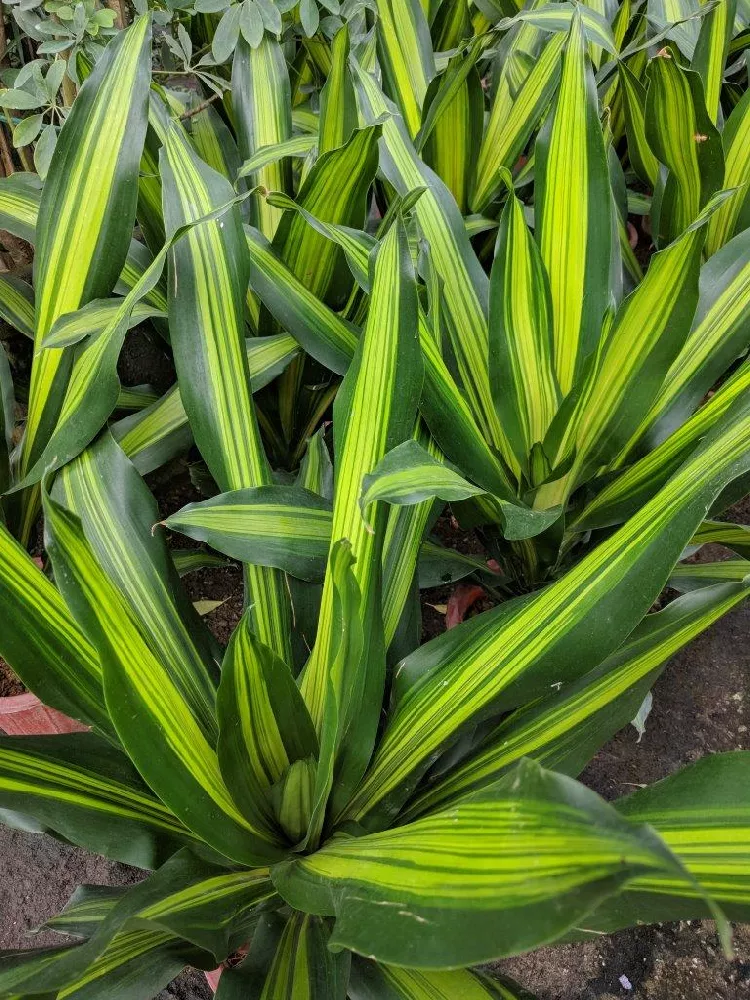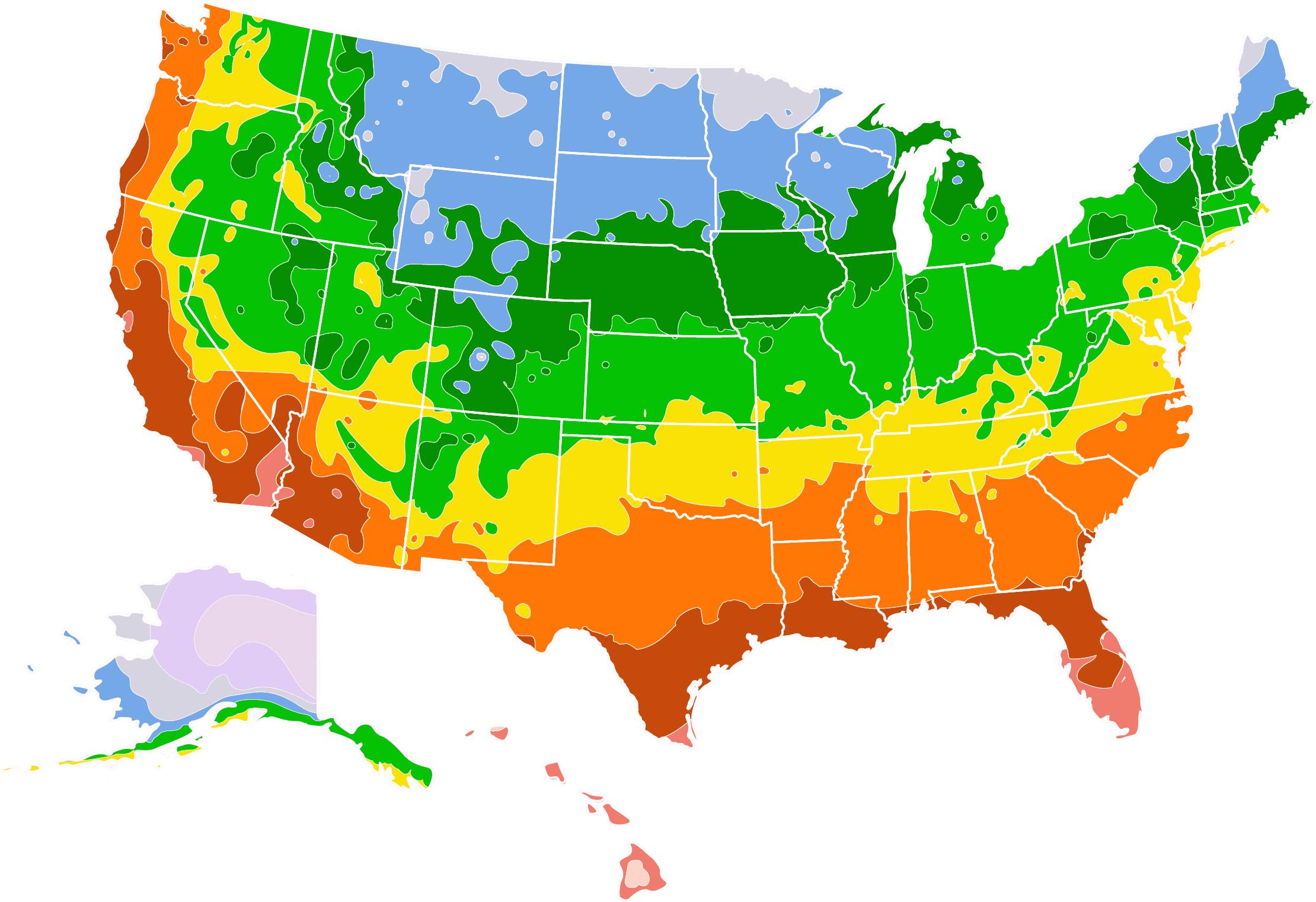- Home >
- Houseplants >
- ‘Dracaena’ Corn Plants
'Dracaena' Corn Plants for Sale - Buying & Growing Guide
With leaves resembling Zea mays, the plant that produces edible corn, ‘Dracaena’ corn plants or Dracaena fragrans may not produce corn, but it will bring a pop of color to your space. A native of West Africa, this plant gets its name from plant stalk and leaves resembling a cornstalk plant. Here are some other facts about corn plants:
- A slow-growing plant that doesn’t require much maintenance, corn plants are ideal for casual gardeners.
- Tolerant of most lighting conditions, making them easy to place all around the house.
- Tolerant of most lighting conditions.
Enter your zip code to find nearby stores that may carry this plant.
Plant Care
Sunlight

Tolerates several different light conditions with partial shade being the best. Excessive direct light can burn the leaves.
Watering
First few inches of soil should be dry before watering. Water about once per week.
Fertilizing

Use a water-soluble fertilizer that has plenty of nitrogen and potassium. Apply once per month during the growing season.
Planting and Care
Planting instructions
Corn plants are most often grown as potted plants. Because this plant likes to be root-bound, you should choose the smallest container that will fit the plant. Corn plants do not tolerate waterlogged soil, so make sure the pot has drainage holes. To ensure sufficient drainage, use a loose, loamy potting soil mix or lava rock mixed with soil.
When it comes to lighting, corn plants are tolerant of most lighting conditions, although they do best in moderate, indirect sunlight. It’s also important to choose a spot that’s protected from drafts.
Watering and nutrients
Corn plants should be watered once every one to two weeks, depending on the amount of light the plant receives. Check your corn plant before watering, and only water when the top inch of the soil is dry. Corn plants are sensitive to chemicals that are often found in tap water, like fluoride and boron, which can cause discoloration or stunted growth. Because of that, you should use distilled water. Fertilizing is generally not required for corn plants, but if you choose to feed your corn plant, use a balanced liquid fertilizer about once a month during the growing season.
Pruning
In most cases, you will only need to prune your corn plant for aesthetic reasons. Leaves typically begin to yellow after two to three years, at which time they can be pruned away to make room for new growth. Prune the leaves at the nodes where the leaf sprouts from the branch. Corn plants can grow quite tall, so you may also need to trim your plant to prevent it from outgrowing its space. To reduce the plant’s height, you can trim off the top portion by cutting it horizontally with garden shears.
Pests and diseases
Keep an eye out for pests like spider mites, thrips, scale, and mealybugs, which are all common houseplant pests. Dusting the plant leaves regularly can help prevent infestations. Signs of pest infestation include dark residue on leaves, stunted growth, and discoloration. Most infestations can be remedied with insecticidal soap or neem oil.
Corn plants are not susceptible to many diseases, although environmental factors, including fluoride in water, temperature fluctuations, and salt buildup in the soil can lead to discoloration
Light
The corn plant is very tolerant of most lighting conditions, though it thrives in moderate and indirect light. Bright direct light will result in a faster-growing plant, though it can also cause the leaves of the plant to become pale or scorched. If you position this plant in an area of strong light, try to use curtains or window blinds to filter the light and give your plant the best chance of growing healthily. If this isn’t possible and the plant receives lots of direct bright light, it would benefit from a specialized fertilizer to prevent chlorosis and bleached looking leaves.
Corn plants in low lit areas will grow more slowly, and the colors of the leaves will become less vibrant; in some cases, the yellow stripe becoming almost imperceptible.
To allow your corn plant to flourish, place it in moderate natural sunlight, ideally in a north facing window.
Humidity
Due to its tropical nature, the corn plant enjoys high humidity. However, it will fare perfectly well in homes with moderate humidity. This plant can be considered as quite sociable, as it does well when set nearby other plants, which help to increase humidity levels. If the humidity in your home drops and the plant seems to suffer as a result with browning leaves, you can spray the plant with a light water mist to combat this.
Temperature
The corn plant is at its happiest with temperatures ranging from 60 to 75 degrees Fahrenheit. If the temperature falls below 55 degrees Fahrenheit, then the leaves will suffer, turning a pale gray or brown color. Try to shield the plant from cold wind by keeping it away from open windows.
In warmer months, keep the plant out of windows that get direct sunlight where it may become too hot. Alternatively, use a curtain to help filter the light and lower the temperature. When the corn plant is in an environment which is too hot for it, the leaves may curl inwards on themselves, or the leaves may start to point towards more shaded areas. If you notice this happening, it’s a sure sign that you need to move your plant to a more suitable spot, as it is trying to guard itself against the sun.
Propagation
The corn plant is an ideal plant to propagate because achieving successful shoots is usually easy and doesn’t cause any issues.
To propagate your corn plant, wait until springtime to take your cutting. This is because the original plant will be in its growing season, and the cutting will, therefore, continue to grow. Cut between two and five inches from a healthy stem that has buds, with a sharp knife or shears. Plant the cutting into a new pot with new soil, making sure the buds remain above soil level. Water the cutting immediately and continue to care for it as necessary. To increase your chances of success, you could also use rooting hormone on the cutting; however, this isn’t essential.
Repotting
The corn plant should be repotted annually to maintain high levels of health. To repot the plant, lift it from its current container and remove the surrounding soil, taking extra care not to disturb the roots. Then, place the plant into a larger pot that will allow it more space to grow over the coming year, and pour fresh potting soil around the base. Don’t pack the new soil in too tightly, as compressed soil won’t allow for good drainage.
Care through winter
The corn plant thrives in high humidity, though winter is often a time of low humidity in homes, due to indoor heating or naturally low temperatures. You can easily maintain a healthy plant by lightly misting the leaves with a water spray to increase humidity, or place the plant pot on a tray filled with pebbles and water. Humidity will be created around the plant as the water evaporates.
Remember to also keep the temperature steady during winter, ideally above 60 degrees Fahrenheit, and certainly not below 55 degrees Fahrenheit. If temperatures fluctuate too much, even within the ideal range, the plant will show signs of distress.
FAQs
How often should I repot a corn plant?
These plants grow slowly, but they prefer to be root-bound, so you only need to move to the next size up when repotting your corn plant. You’ll want to repot your corn plant once its roots fill the container — this will happen every two or three years. To repot a corn plant, lift the plant from its current container and gently remove the surrounding soil, without disturbing the roots. Fill the new pot with soil, being careful not to pack the new soil too tight.
How do I propagate a corn plant?
The best time to propagate a corn plant is in the spring. With a sharp knife or shears, cut 2 to 5 inches from a healthy stem with buds. Plant the cutting in a new pot with new soil, making sure the buds remain above soil level. Water the cutting immediately. To increase your chances of success, you could also use rooting hormone on the cut end; however, this isn’t essential.
Are there different varieties of corn plants?
Yes. There are a few different varieties of corn plants. The two most common varieties found in garden centers are Dracaena fragrans ‘Massangeana,’ which have dark green leaves with a yellow-lime stripe in the middle, and Dracaena fragrans ‘Lindenii,’ which have yellowish leaves and a dark green stripe. Dracaena fragrans ‘Victoria’ corn plants have white stripes in the middle of its leaves, but are less commonly found in garden centers.
Should I mist my corn plant?
As natives of a tropical setting, corn plants need a moderate level of humidity to thrive. A daily misting with water can be helpful to keep your corn plant healthy. Another option to keep the humidity levels optimal for your corn plant is to fill a drip tray with pebbles and water, and place the pot on top of the pebbles. The evaporating water will raise the humidity levels around the plant.
Are corn plants toxic?
Corn plants are not considered toxic to humans, although their leaves contain alkaloids, which may cause stomach irritation if ingested by children. However, these plants are poisonous for common household pets, including cats and dogs. Their leaves contain saponins, toxic compounds that can cause vomiting, excessive salivation, depression, and dilated pupils if ingested by pets. Keep corn plants out of reach of pets and children to avoid all of these issues.










